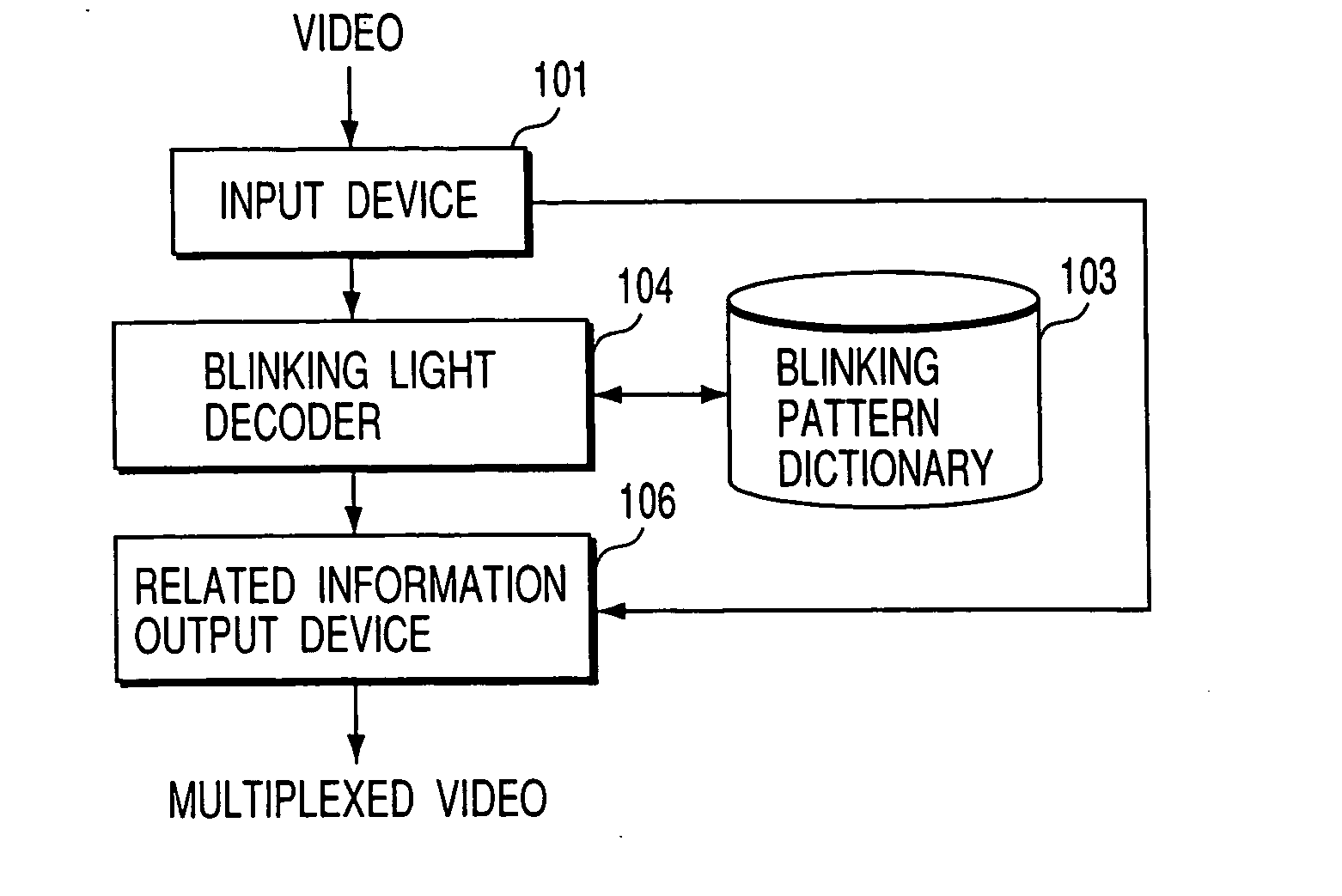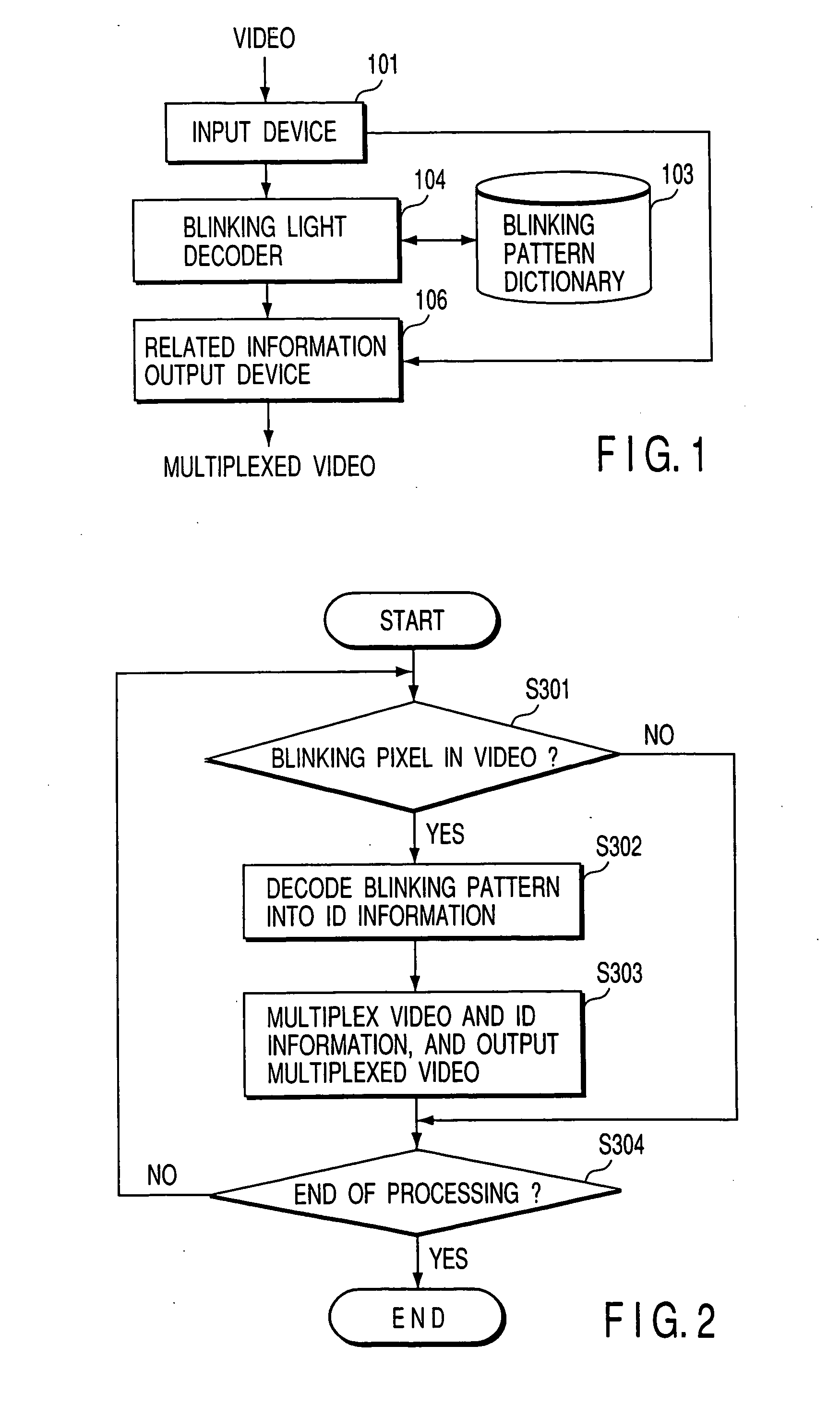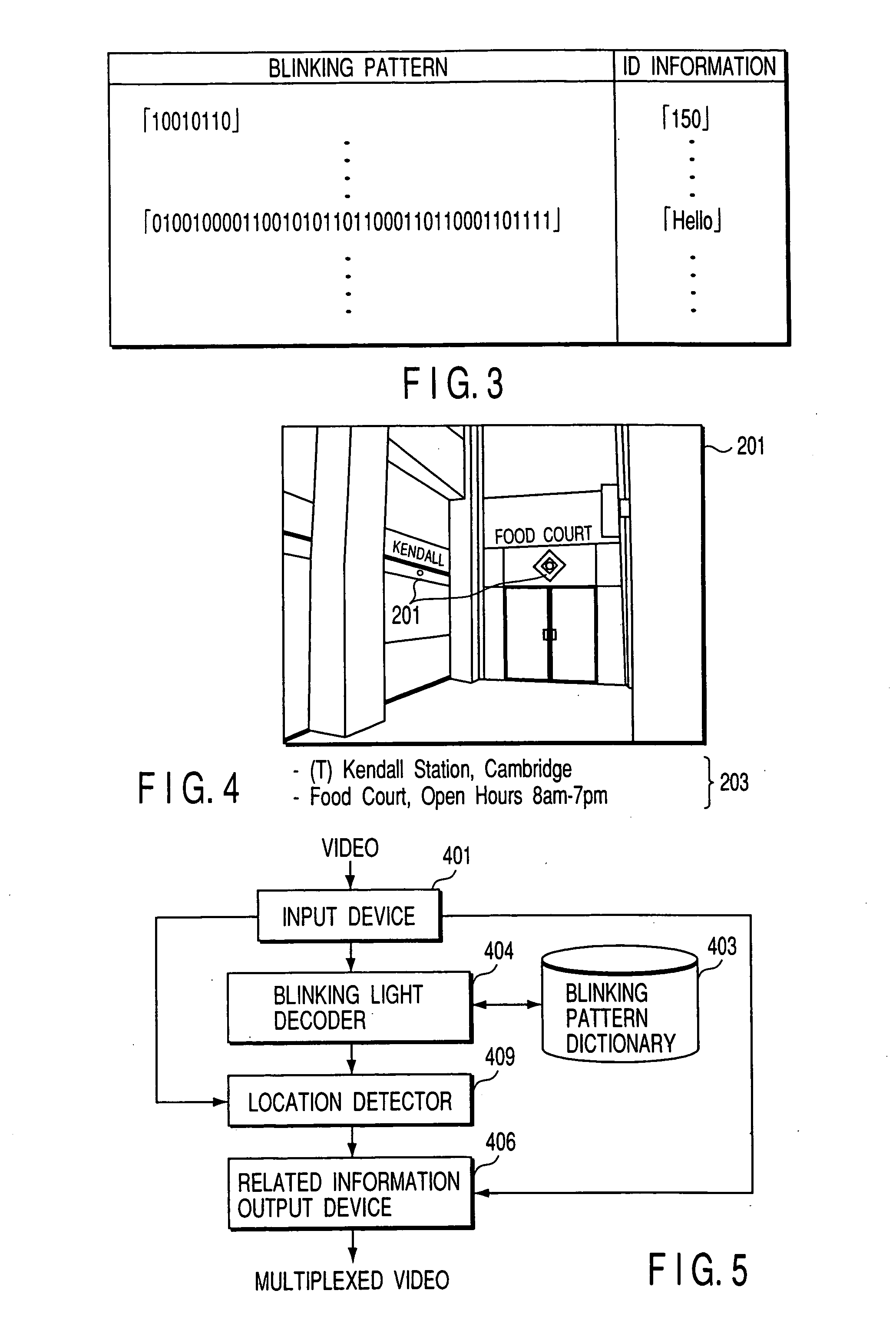Video information processing apparatus and transmitter for transmitting information to the same
a technology of information processing and video, which is applied in the field of video information processing, can solve the problems of inexperienced capturing, cumbersome later rearrangement, and cumbersome annotation
- Summary
- Abstract
- Description
- Claims
- Application Information
AI Technical Summary
Benefits of technology
Problems solved by technology
Method used
Image
Examples
first embodiment
[0041]FIG. 1 is a block diagram showing the arrangement of the first embodiment according to the present invention. Video information is input to an input device 101 such as a camera CCD, and separated into processing video and displaying / recording video. At this time, the processing video and displaying / recording video have the same contents.
[0042] The processing video is sent to a blinking light decoder 104. As shown in the flow chart of FIG. 2, the blinking light decoder 104 determines based on video of several seconds whether a light source which blinks in accordance with a predetermined rule exists in video (S301).
[0043] The predetermined rule is an IrDA (Infrared Data Association) protocol for exchanging information by radio between infrared remote controllers for remote-controlling home appliances such as a television receiver, videotape player, and air conditioner, between notebook type personal computers, or between a notebook type personal computer and a printer. The rule...
second embodiment
[0065] If the video information processing apparatus comprises a means for specifying a tag (blinking light source) which transmits given ID information in video, like the video information processing apparatus according to the present invention, the video processing device 706 outputs video 804 obtained by blacking only the subject 803 which transmits the ID information “don't take a picture of me” or performing “blurring” or “mosaicking” (masked subject).
[0066] As a method of calculating the area of a tagged person from the location of the tag looked like a point in video, video is finely meshed (or divided in a plurality of video elements), a motion vector at each portion of the video (vector representing a position to which each portion of the mesh moves between the current and next frames) is calculated, and a portion having a motion vector different from that of the background is regarded as one subject area. As another method, an area is expanded from a tagged portion (part o...
fifth embodiment
[0079]FIG. 15 is a flow chart for explaining the procedures of the present invention. When a light source expected to exist within the capturing video range of a camera falls outside the capturing field of view, the user is notified of this.
[0080] Similar to the second embodiment, the blinking light decoder 1304 checks whether a light source blinking in accordance with a predetermined rule exists in video (S1601), and converts the blinking pattern into ID information on the basis of the blinking pattern dictionary 1303 (S1602).
[0081] The location detector 1309 calculates a location in the video where the pixel transmits the blinking pattern converted into the ID information by the blinking light decoder 1304 (S1603), and sends the location information and the ID information converted from the blinking pattern to the subject detector 1306. The subject detector 1306 determines whether ID information registered in advance has been read (S1604).
[0082] If No in step S1604, the subject ...
PUM
 Login to View More
Login to View More Abstract
Description
Claims
Application Information
 Login to View More
Login to View More - R&D
- Intellectual Property
- Life Sciences
- Materials
- Tech Scout
- Unparalleled Data Quality
- Higher Quality Content
- 60% Fewer Hallucinations
Browse by: Latest US Patents, China's latest patents, Technical Efficacy Thesaurus, Application Domain, Technology Topic, Popular Technical Reports.
© 2025 PatSnap. All rights reserved.Legal|Privacy policy|Modern Slavery Act Transparency Statement|Sitemap|About US| Contact US: help@patsnap.com



